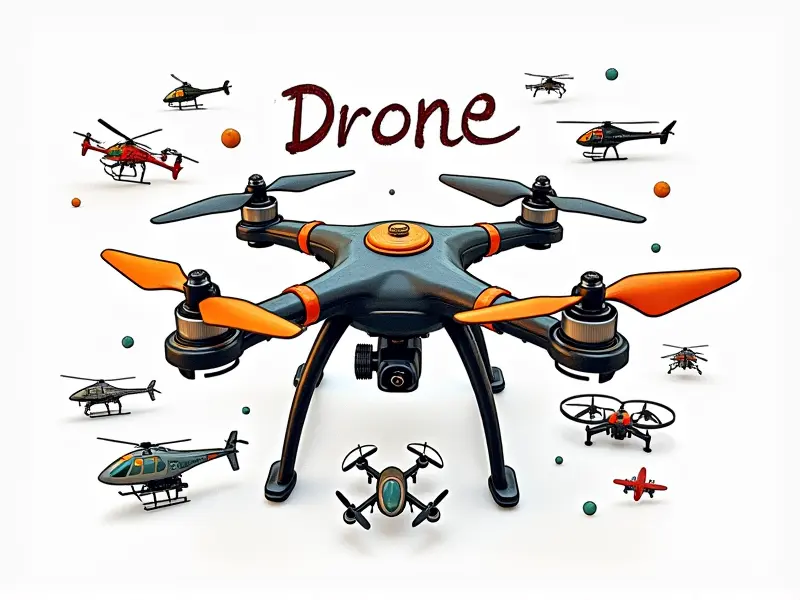Drone gimbal alignment tips

Mastering Drone Gimbal Calibration Quickly
Calibrating your drone gimbal is a crucial step in ensuring that your aerial footage is smooth and professional. Proper calibration can make the difference between mediocre shots and stunning visuals. This guide will walk you through the essential steps to quickly calibrate your drone's gimbal, enhancing its stability and performance.
Achieve Flawless Drone Gimbal Balance
For optimal camera stability, achieving a perfect balance in your drone’s gimbal is non-negotiable. A well-balanced gimbal ensures that the camera remains level during flight, reducing vibrations and improving video quality. Here are some key tips to achieve flawless gimbal balance:
- Check for Proper Weight Distribution: Ensure that all components of your drone, including batteries, cameras, and other accessories, are evenly distributed.
- Adjust the Center of Gravity (COG): Fine-tune the COG to match the manufacturer's specifications. This is critical for maintaining stability during flight.
- Use High-Quality Components: Invest in high-quality parts and materials that are designed specifically for your drone model.
Essential Guide to Drone Gimbal Adjustment
The process of adjusting a drone gimbal can be complex, but with the right approach, it becomes manageable. Here’s an essential guide to help you through:
- Understand Your Model: Familiarize yourself with your specific drone model and its unique features.
- Follow Manufacturer Instructions: Always refer to the manufacturer's manual for precise guidelines on adjusting your gimbal.
- Use Calibration Tools: Utilize calibration tools provided by the manufacturer or third-party software designed specifically for this purpose.
Quick Tips for Aligning Drones
To ensure that your drone is perfectly aligned, follow these quick tips:
- Level the Drone: Use a spirit level to ensure your drone is completely horizontal before flight.
- Check Gimbal Locks: Ensure all gimbal locks are properly engaged and secure.
- Test in Different Conditions: Test your drone's alignment under various conditions, such as different weather or lighting scenarios.
Perfect Your Drone Gimbal Alignment Today
Improving the alignment of your drone gimbal is a continuous process that requires patience and attention to detail. By following these steps, you can achieve near-perfect results:
- Regular Maintenance: Regularly check and maintain your drone’s components.
- Practice Calibration: Practice calibrating your gimbal regularly to get a feel for the process.
- Seek Professional Help: If you encounter issues, consider consulting with professionals who specialize in drone maintenance.
Top Tricks for Drone Camera Stability
Maintaining camera stability is crucial for capturing high-quality footage. Here are some top tricks to enhance your drone’s camera stability:
- Use High-Quality Batteries: Ensure that your batteries provide consistent power throughout the flight.
- Optimize Camera Settings: Adjust settings such as ISO, shutter speed, and aperture for optimal performance.
- Implement Anti-Vibration Techniques: Use anti-vibration techniques like dampening materials or specialized mounts to reduce camera shake.
Simplified Drone Gimbal Alignment Process
The process of aligning a drone gimbal can be simplified by breaking it down into manageable steps:
- Initial Setup: Begin with the initial setup, ensuring all components are correctly installed.
- Calibration: Calibrate your gimbal according to manufacturer instructions.
- Testing and Adjustment: Test the alignment in various conditions and make necessary adjustments.
Maximize Video Quality with Perfect Gimbal Setup
A perfectly aligned gimbal can significantly enhance video quality. Here’s how to maximize your drone's performance:
- Choose High-Quality Components: Invest in high-quality components that are compatible and optimized for your specific model.
- Optimize Flight Conditions: Fly under optimal conditions, avoiding windy or turbulent environments.
- Leverage Advanced Features: Utilize advanced features like horizon lock to maintain a stable shot during flight.
Optimize Your Drone's Camera Stability
To optimize your drone’s camera stability, focus on the following aspects:
- Regular Maintenance Checks: Regularly inspect and clean all components to ensure they are in optimal condition.
- Calibration Routine: Establish a routine for regular calibration to maintain peak performance.
- Utilize Advanced Features: Take advantage of advanced features like horizon lock, electronic image stabilization (EIS), and mechanical gimbal stabilization.
Easy Guide to Aligning Your Drone Gimbal
Aligning your drone’s gimbal doesn’t have to be complicated. Follow this easy guide:
- Initial Setup: Begin with a thorough initial setup, ensuring all components are correctly installed.
- Calibration: Calibrate the gimbal according to manufacturer instructions.
- Testing and Adjustment: Test the alignment in various conditions and make necessary adjustments.
Mastering Drone Gimbal Adjustment Techniques
Mastery of drone gimbal adjustment techniques requires practice and patience. Here are some key techniques to master:
- Understanding Calibration Tools: Learn how to use calibration tools effectively.
- Fine-Tuning Adjustments: Practice making fine-tuned adjustments for optimal performance.
- Testing in Real-World Conditions: Test your drone’s alignment under real-world conditions to ensure reliability and stability.
Conclusion
Mastery of drone gimbal calibration is essential for achieving professional-grade aerial footage. By following the tips and techniques outlined in this guide, you can quickly and effectively calibrate your drone's gimbal, ensuring smooth and stable video capture every time. Regular maintenance and practice will further enhance your skills, allowing you to produce high-quality content consistently.

